— Best Time to Visit Patagonia.
Patagonia. Just SAY it. Doesn’t it sound like the start of an epic adventure movie? Dramatic peaks that look like they’ve been sculpted by giants, impossibly blue lakes reflecting skies so clear they seem to go on forever, and vast, windswept plains that stretch to the very end of the world.
Patagonia is a land of adventure — a place where nature makes you feel wonderfully, thrillingly tiny. You’re basically in a real life nature documentary!
But hold on a second. Before you start packing your bags and dreaming of scaling snow-capped mountains, planning a trip to this breathtaking region requires a little more than just a sense of wanderlust. Timing is everything.

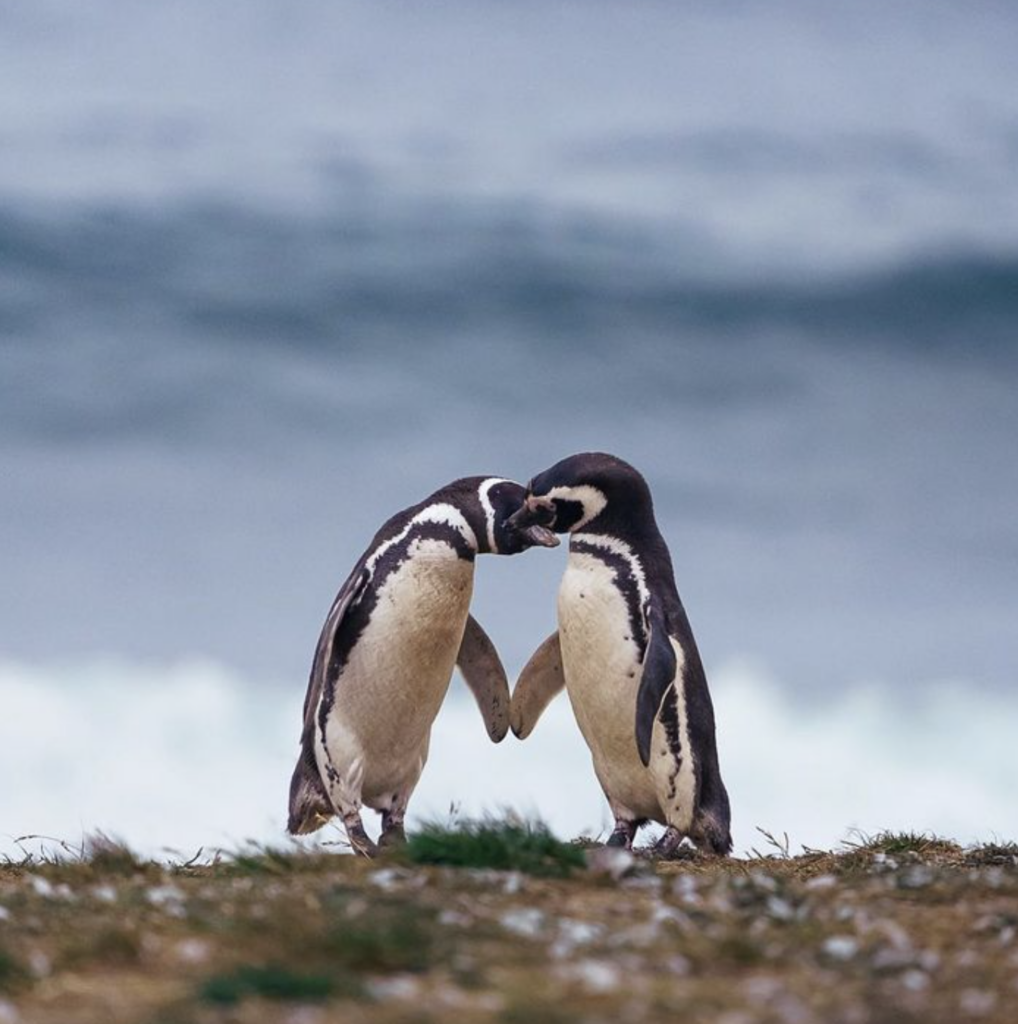
As local South America travel experts, we’ve spent years designing tailor-made journeys through Patagonia for discerning travelers. We’ve explored its remote corners, navigated its unpredictable weather, and learned firsthand that timing is everything.
Imagine showing up in the middle of winter, dreaming of warm days and hiking trails in El Chaltén, only to be greeted by blizzards and closed roads.
Not ideal, right? It might seem obvious, but did you know that summer in Patagonia happens from December through February? Patagonia’s seasons are the opposite of the Northern Hemisphere—summer runs from December through February, and each season offers completely different landscapes, experiences, and challenges.
If you are looking for the best time to visit Patagonia: In short, the best month to visit Patagonia depends on your priorities!
Choosing the ideal time to visit Patagonia ultimately hinges on your personal interests. Whether you seek breathtaking landscapes, vibrant wildlife, or thrilling outdoor adventures, understanding the unique characteristics of each season will help you plan an unforgettable experience in this stunning region.
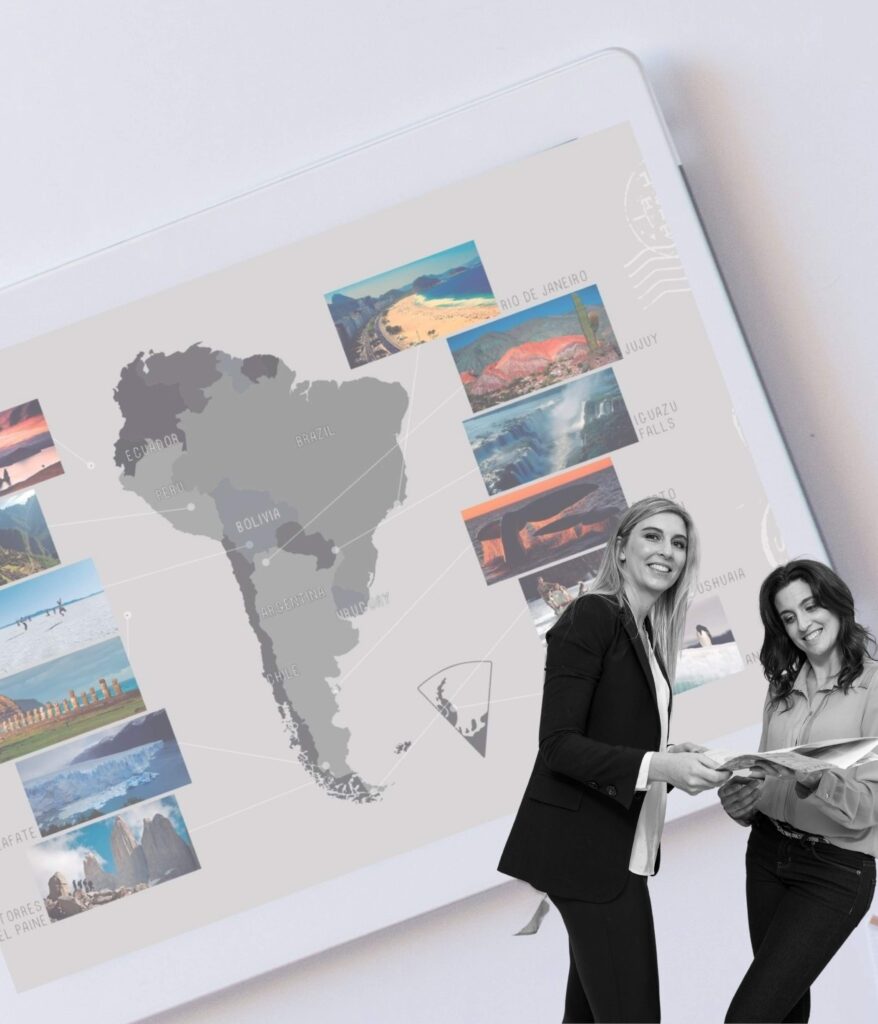
Planning a trip to South America? Get our Free Luxury travel guide. Find all you need to know about your next trip to South America.
Navigate to where you want to go:
Best time to Visit Patagonia
So, the million-dollar question: when is the best time of year for YOU to visit Patagonia?
Is it the summer months with their longer days perfect for outdoor activities? Or maybe you’re a wildlife enthusiast dreaming of whale watching and Magellanic penguins? Or maybe the cooler temperatures of autumn and the chance to see the landscape ablaze with fall colors is more your style? Or are you a hardcore adventurer yearning for the winter months, plenty of snow, and the challenge of exploring a frozen wonderland?
Let’s dive into a seasonal breakdown to help you plan your perfect Patagonian adventure!
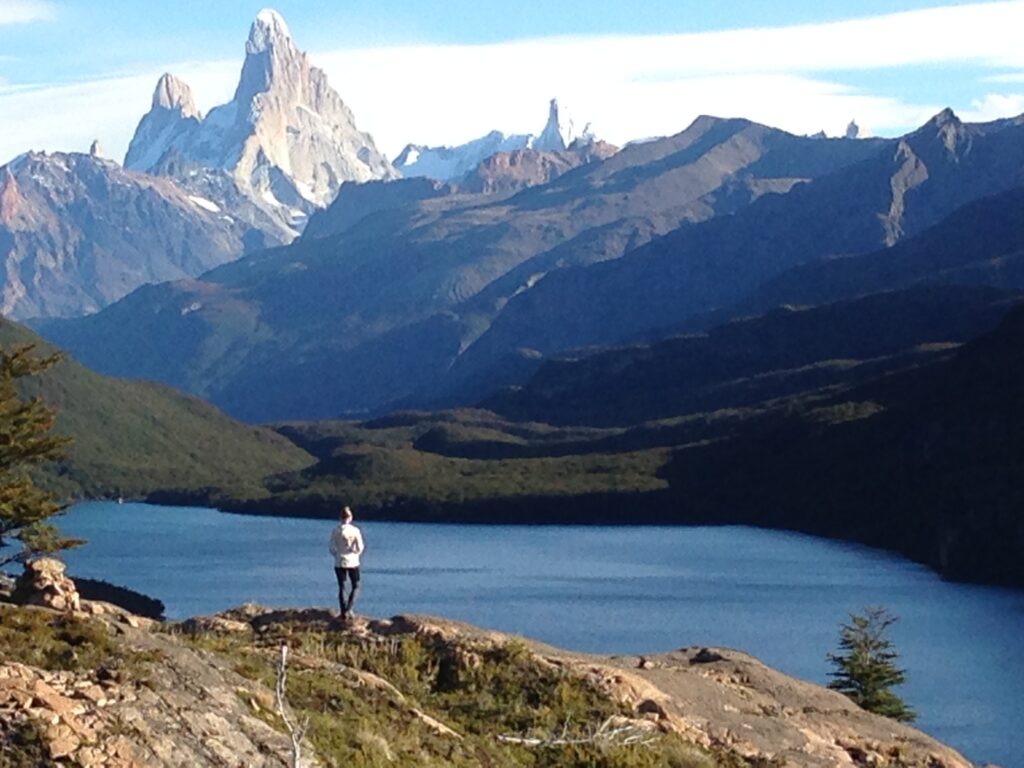
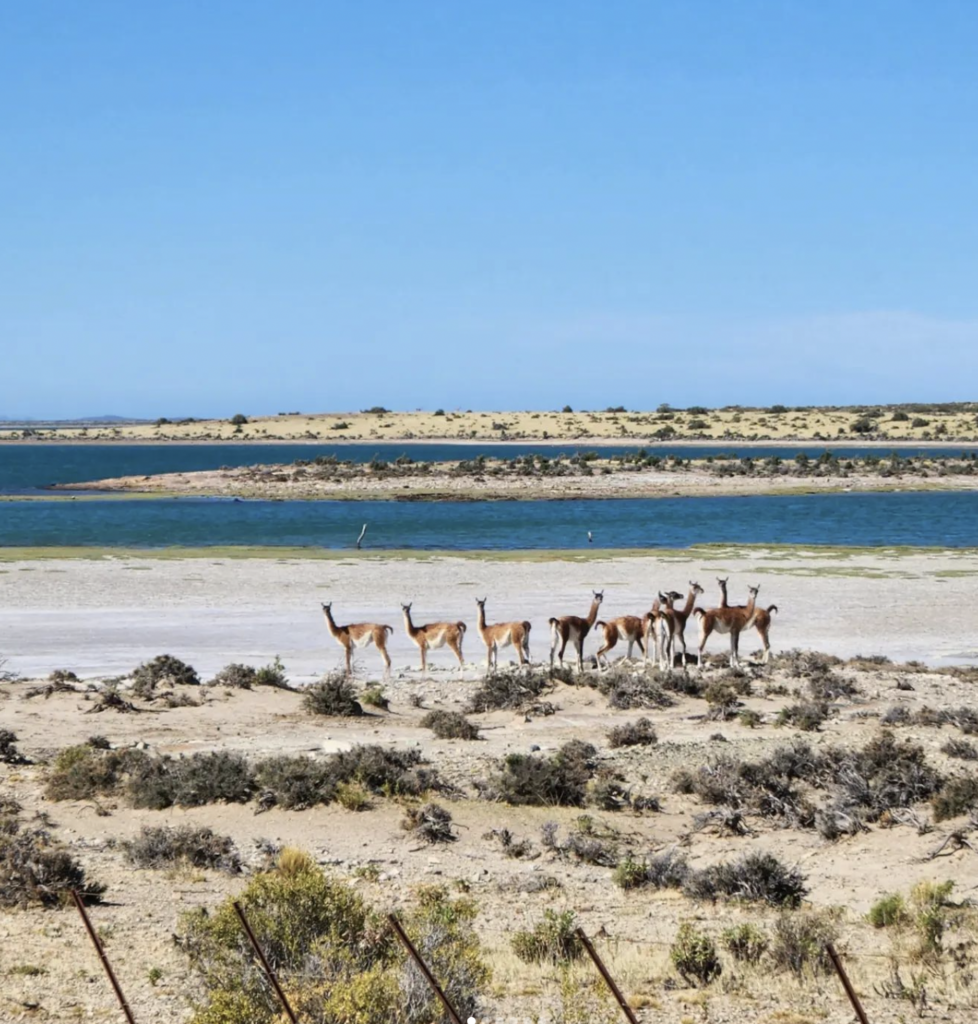
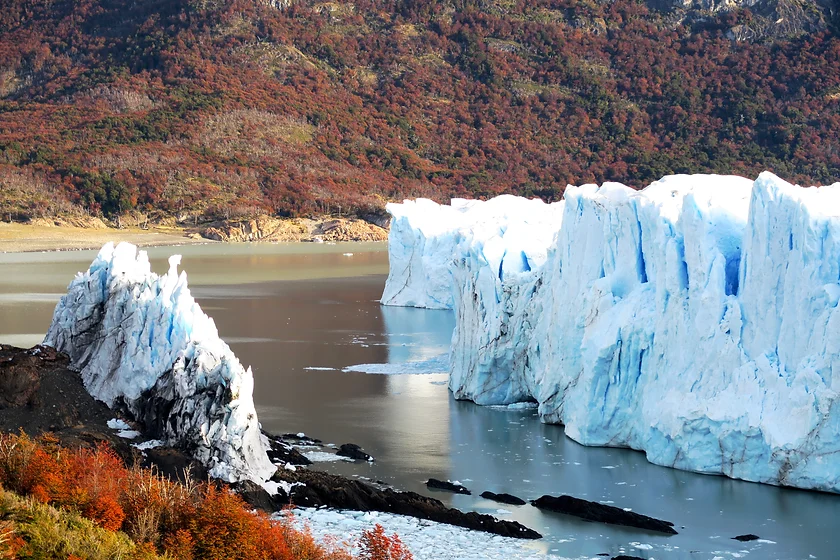
Best time to visit Patagonia: Overview of Patagonian Seasons
Okay, so here’s the important thing to remember about Patagonia: it’s in the Southern Hemisphere. That means its seasons are flipped compared to what you might be used to. Summer in Patagonia? That’s YOUR winter! And when you’re bundling up in our warm clothes for cold nights, they’re enjoying (relatively) warm days and longer days.
Basically, the best time of year for you to visit depends entirely on what you want to do and what kind of weather you prefer. Want to hike in Torres del Paine National Park under the midnight sun? Then you’re looking at summer months. Dreaming of snow-capped mountains and plenty of snow for skiing? Then winter months are better for you. This means planning your trip according to your preferred outdoor activities and weather conditions is absolutely crucial. You wouldn’t want to show up expecting warm weather for day hikes only to find yourself shivering in colder temperatures and heavy rain.
YOU MIGHT ALSO LIKE…
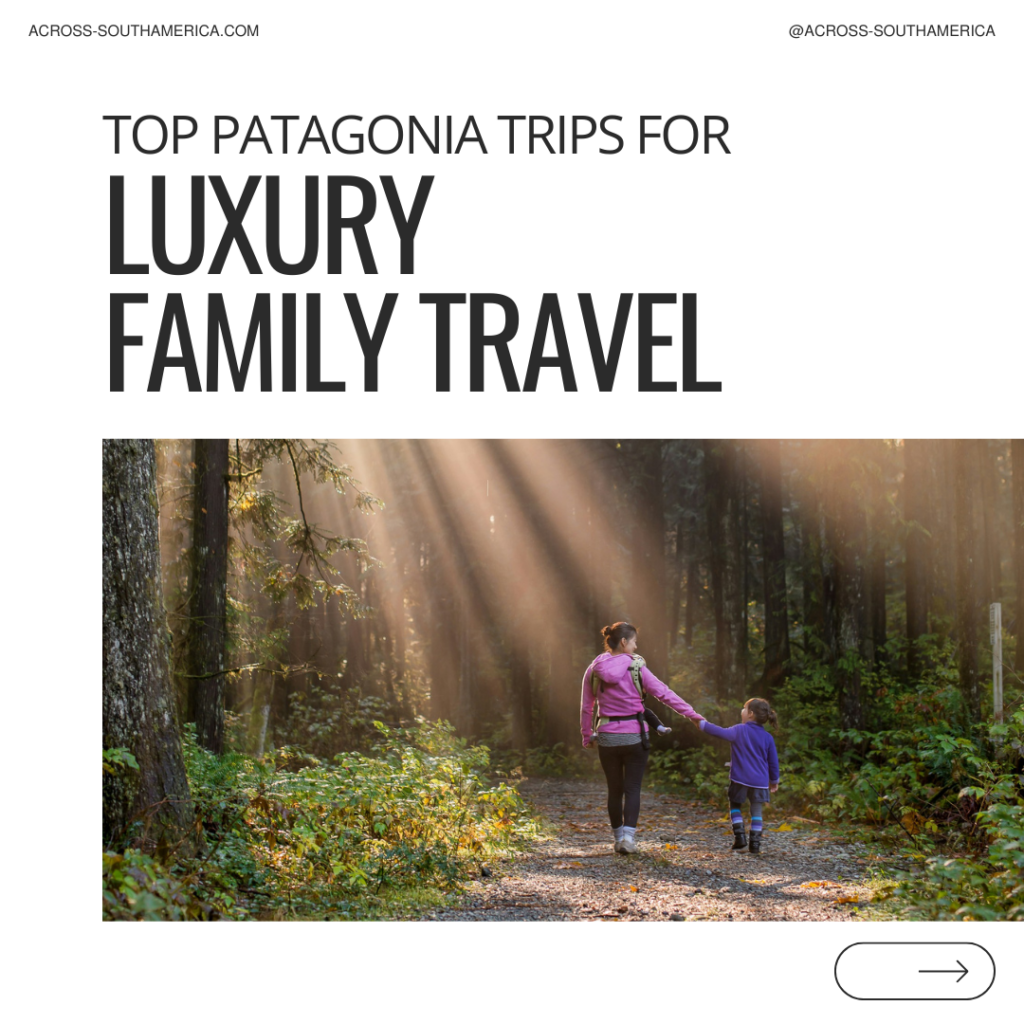

Seasonal Climate Patterns
Patagonia’s weather is notoriously unpredictable, even within a single season. You can experience all four seasons in one day sometimes! There are almost always strong winds, and quick changes in temperature and precipitation are the norm. (Seriously, layers are your best friend. Always!) But even with the unpredictable weather, each season does have general characteristics:
- Spring (September-November): Think of spring in Patagonia as the land waking up after a long nap. Wildflowers are blooming, painting the landscapes in vibrant colors, and wildlife is starting to get active. Temperatures are pretty mild, but you should still expect some rain and wind. It’s a beautiful time to visit, especially if you’re a nature lover.
- Summer (December-February): This is Patagonia’s high season, which means you’re going to be surrounded by a lot of tourists, even if you’re in a normally quiet place like national parks. You’ll get long daylight hours, perfect for maximizing your time outdoors, and the warmest temperatures you’ll find all year. It’s also the windiest time of year, so be ready for that if you choose to travel in summer. This is a great time for many outdoor activities.
- Autumn (March-May): Imagine Patagonia transformed into a canvas of reds, oranges, and yellows. That’s autumn! The fall foliage is absolutely stunning. Temperatures are cooling down, making it perfect for hiking, and the crowds are starting to thin out, which means more peace and quiet. Autumn in Patagonia is a photographer’s dream.
- Winter (June-August): Winter turns Patagonia into a true winter wonderland. Snow covers everything, creating a magical landscape, and there are fewer visitors, adding to the tranquility. Some areas are closed due to heavy snow, but it’s a truly unique and unforgettable time to experience Patagonia. Honestly, winter just might be our favorite season of all! Plus, there’s plenty of snow for winter sports.
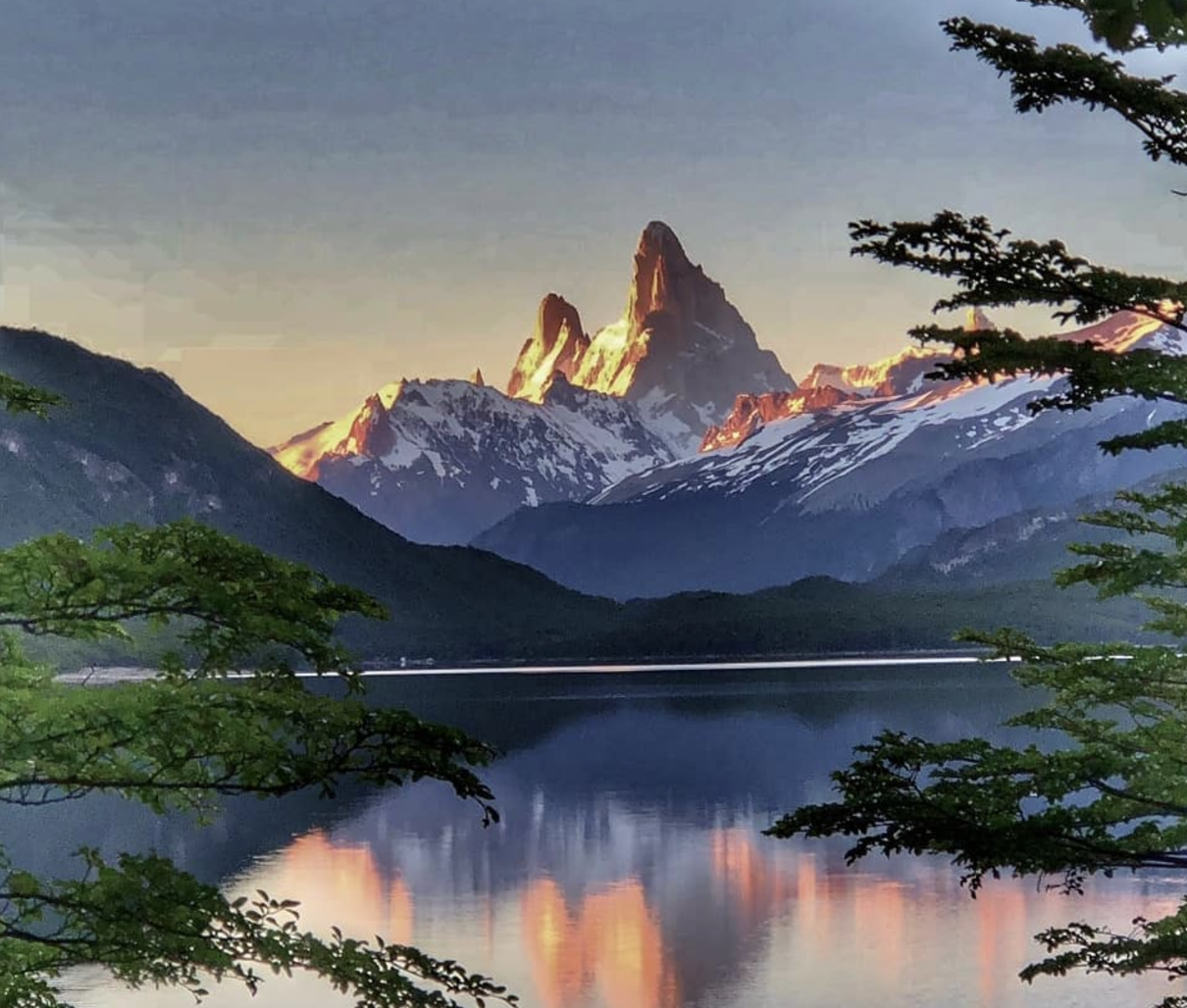
Temperatures and how much it rains or snows can change a lot depending on where you are in Patagonia. The Andes Mountains create a “rain shadow,” so the west side gets more rain than the east. Coastal areas are usually milder than inland areas too. So, if you’re planning on visiting both the Chilean side and the Argentine Patagonia, be sure to check the specific weather for each region.
Impact of Seasons on Travel
The season you choose will really impact your trip. Summer is when everything is open, and you can do pretty much anything you want, but it’s also the most crowded and expensive. Spring and autumn (the “shoulder seasons”) are a good middle ground – nicer weather, fewer people, and maybe better prices. Winter is amazing, but you’ll need to do some extra planning because some places are closed, and it’s definitely colder.
Accessibility and Activities:
- Summer (December-February): This is high season in Patagonia. Everything is generally open, from Torres del Paine National Park to the trails in Los Glaciares National Park. You can do pretty much any outdoor activity you can dream of, from mountain biking to horseback riding. Want to explore the Carretera Austral? Summer is your best time of year. Thinking of sailing around Cape Horn? Summer is the ideal time. However, keep in mind that even though it’s the warmest time of year, strong winds are also at their peak.
- Spring (September-November) and Autumn (March-May): These are the “shoulder seasons,” and they offer a fantastic middle ground. Many trails are open, the weather is often pleasant with cooler temperatures (though still unpredictable weather is possible, so be prepared!), and there are fewer tourists than in the summer. This is a great time for day hikes and wildlife observation, and you’ll often find that hotel rates are a bit lower. If you’re into wildlife enthusiasts and want to see Magellanic penguins or elephant seals on Peninsula Valdes (or Valdes Peninsula as some call it), spring can be an excellent time.
- Winter (June-August): Winter in Patagonia is a completely different experience. Some areas, especially in the southern regions, are inaccessible due to cold temperatures and plenty of snow. Short days and potential for heavy snow can limit some outdoor activities. However, if you’re into winter sports like skiing or snowboarding, or just want to experience the magic of snow-capped mountains and clear skies without the crowds, winter can be an amazing time to visit. Just be prepared for colder temperatures and the need for warm clothes.
Crowd Levels and Pricing:
- Summer: Expect the largest crowds and the highest prices, especially during the peak months of January and February. Booking accommodations and tours well in advance is absolutely essential. Popular destinations like El Chalten and El Calafate will be bustling.
- Shoulder Seasons: You’ll find fewer tourists and generally lower prices for accommodations and tours. This makes spring and autumn a great option for budget-minded travelers who still want to enjoy the great outdoors.
- Winter: Winter sees the fewest visitors, but some hotels and restaurants may be closed. You might find some good deals on accommodation, but you’ll need to factor in the cost of winter gear.
In short, the best month to visit Patagonia depends on your priorities!
If you want the widest range of activities and don’t mind a livelier atmosphere, Patagonia’s summer season is a fantastic time to visit. With long daylight hours and warmer temperatures, it’s perfect for exploring iconic landscapes like Torres del Paine and El Chaltén. But peak season also means more travelers on the trails. The good news? Patagonia has some hidden gems where you can still experience Patagonia’s breathtaking beauty away from the crowds- As local experts, we can help you find them!
For a more tranquil and immersive experience, we highly recommend visiting in autumn—our favorite season. The landscapes transform into a painter’s dream, with golden forests and fiery red lenga trees set against snow-dusted peaks. Wildlife is more active, and the trails are quieter, allowing for a deeper connection with nature. This is also the ideal time for photography, with softer light and crisp air enhancing every breathtaking view.
Winter offers its own magic, especially for those who love dramatic, snow-covered landscapes and winter sports in Bariloche or Ushuaia.
But no matter when you choose to visit, Patagonia requires thoughtful planning. Accommodations and experiences book up well in advance, especially in peak season, so securing your trip early ensures you get the best guides, lodges, and seamless experiences. And one thing is constant year-round—Patagonia’s weather is unpredictable, so always pack for all seasons!
Read More: Best time to visit South America — Our updated guide with our handpicked, bucket-list destinations that shine each time of year.
The Best Time to Go To Patagonia — Spring in Patagonia (September-November)
Spring in Patagonia is like the land hitting the “refresh” button. After the long winter, everything starts coming to life, and it’s a truly beautiful time to be there. Imagine wildflowers painting the landscapes in every color imaginable, wildlife emerging from their winter slumber, and the air filled with the sounds of nature awakening. It’s magical!
Weather and Natural Phenomena
Spring temperatures in Patagonia are a bit of a rollercoaster. You can experience anything from cool to mild, so layering is key! Generally, you can expect daytime temperatures to hover around 50°F (10°C). The best part? The days are getting longer, which means more precious time for exploring all those incredible national parks! You’ll probably run ino some rain and wind – it’s Patagonia, after all! – but it’s usually not as intense as the strong winds you get in the summer.
This is when Patagonia’s famous wildflowers really put on a show. It’s a riot of color! And as the weather warms up, wildlife starts becoming much more active. You’ll have a great chance of spotting guanacos grazing in the fields, maybe even a puma if you’re lucky, and all sorts of birds flitting about. Spring also marks the beginning of whale watching season, especially around Peninsula Valdes. You might even catch a glimpse of some Magellanic penguins waddling along the coast. It’s a paradise for wildlife enthusiasts and nature lovers!
Recommended Activities
- Hiking: Lots of trails in Torres del Paine National Park and Los Glaciares National Park are open in spring, and the views with all the blooming flowers are absolutely incredible. Imagine trekking with a backdrop of snow-capped peaks and vibrant blooms! It’s a photographer’s dream.
- Wildlife Watching: Spring is the time for whale watching, especially around Peninsula Valdes (or Valdes Peninsula). Puerto Madryn is a great jumping-off point for tours. Birdwatching is also fantastic, with all the migrating birds returning to the region after winter.
Pros and Cons of Spring Travel
- Pros: Way fewer crowds than the summer months, the weather is generally pretty good (though still unpredictable weather is a possibility!), wildflowers are everywhere you look, and wildlife viewing is at its best. Plus, you might find better deals on hotel rates than during peak tourist season.
- Cons: Some trails or attractions, especially in the southern regions, might still be closed after the winter, and the weather can be a bit unpredictable, so you need to be prepared for anything. Some trails might also be a bit muddy from melting snow.
The Best Time to Go To Patagonia — Summer in Patagonia (December-February)
Summer in Patagonia? It’s party time! Think long, glorious days, the warmest weather you’ll get all year (though still windy!), and pretty much everything open and accessible. It’s the peak tourist season for a reason!
Peak Season Characteristics
Summer temperatures in Patagonia can reach up to a pleasant 70°F (21°C), but don’t let that fool you. That crazy Patagonian wind can make it feel much cooler, so layers are still essential even on the warmest days. Prepare for some serious gusts! You’ll get almost 20 hours of daylight in some places, which is absolutely wild and gives you so much time to explore. But… summer is also the windiest season. Seriously, be ready for some serious gusts that can whip right through you.
Because it’s the most popular time to visit, summer is also the most crowded and expensive. You have to book everything way in advance, especially if you’re traveling during the peak months of January and February. Hotel rates skyrocket, and tours fill up quickly.
Summer Activities and Destinations
- Hiking: All the trails in Torres del Paine National Park, Los Glaciares National Park, and beyond are usually open in the summer, so take your pick! The “W” trek in Torres del Paine and the Fitz Roy trek in El Chalten are super popular, offering stunning views and challenging terrain. El Chalten is a hiker’s paradise! You’ll find everything from easy day hikes to multi-day treks.
- Water-Based Activities: Since it’s warmer (relatively speaking!), summer is perfect for kayaking, rafting, and boat tours. The Lake District in Argentine Patagonia is a great place to do this stuff. Imagine paddling through crystal-clear waters with a backdrop of snow-capped peaks.
- Glacier Exploration: Summer is also a good time to check out Patagonia’s incredible glaciers. Take a boat tour to the Perito Moreno Glacier, a truly awe-inspiring sight, or go ice trekking on the Viedma Glacier for a more adventurous experience.
Planning Tips for Summer Visits
- Book Early: Seriously, book everything way ahead of time, especially if you’re traveling during the busiest part of summer. Flights, accommodations, tours… the whole shebang. Don’t leave anything to the last minute!
- Escape the Crowds: If you want to avoid the biggest crowds, try going to some of the less popular areas or hiking trails. There are plenty of hidden gems to discover in both Chilean Patagonia and Argentine Patagonia. Visiting a little earlier in December or later in February (the shoulder seasons within summer) can also help you avoid the peak rush. Consider exploring some of the beaten track locations for a more authentic experience.
The Best Time to Go To Patagonia — Autumn in Patagonia (March-May)
Autumn in Patagonia? It’s like someone took a paintbrush to the landscape and created a masterpiece. The leaves change color, transforming the forests into a vibrant tapestry of reds, oranges, and yellows. It’s truly breathtaking and a photographer’s dream come true.
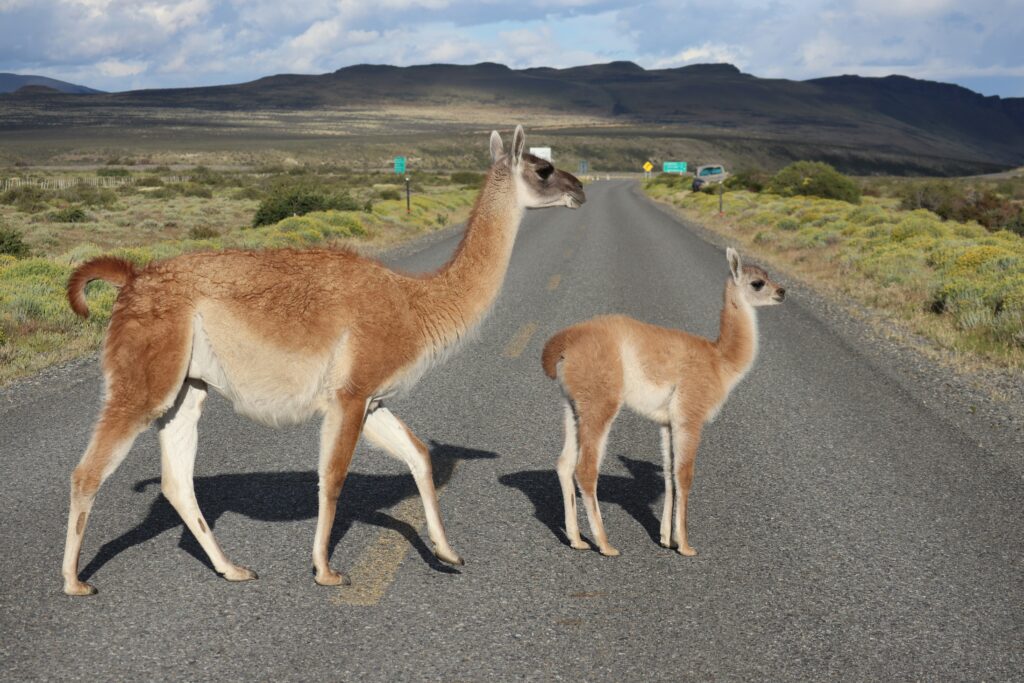
Autumnal Weather and Scenery
Temperatures start to drop in autumn, making it feel crisp and refreshing. You can usually expect daytime temperatures around 45°F (7°C), perfect for hiking without breaking a sweat. The days are getting shorter, but there’s still plenty of daylight to explore. The real star of the show in autumn is the foliage. The lenga trees, a type of beech native to Patagonia, turn all shades of red, orange, and yellow, creating a stunning spectacle. It’s an absolute feast for the eyes and a must-see for any nature lover.
Autumn-specific Activities
- Autumn Hikes and Treks: The crisp air and the explosion of fall colors make autumn the perfect time for hiking in Patagonia. Imagine trekking through forests ablaze with color! The trails around El Chalten, with its iconic views of Fitz Roy, and Tierra del Fuego National Park, the end of the world, are especially beautiful during this season.
- Wildlife Viewing: Autumn is a good time to see guanacos migrating to lower altitudes as the weather gets colder. Birdwatching is also excellent, since many migratory birds are still around before they head north for the winter. Keep an eye out for condors soaring above the mountains!
Benefits of Autumn Travel
- Fewer Crowds: One of the biggest perks of visiting Patagonia in autumn is that there are way fewer visitors than in the summer months. This means you can enjoy a more peaceful and intimate experience with nature. You’ll have more space on the trails, and you won’t have to fight for the best viewpoints.
- Better Prices: You might be able to find cheaper accommodation and tours in the autumn compared to the high season of summer. This makes it a great time to visit if you’re on a budget.
- Perfect Hiking Weather: It’s not too hot and not too cold, making autumn ideal for hiking and other outdoor activities. The cooler temperatures make trekking much more comfortable, and you won’t have to worry about overheating. It’s the best time of year for many outdoor enthusiasts.
Winter in Patagonia (June-August)
When thinking When is the best time of year to visit Patagonia, is Winter on the radar ? Well, you can also visit Patagonia in Winter. It’s a snow lover’s dream! Picture this: a world transformed into a pristine white wonderland, with snow-covered mountains, frozen lakes, and a peaceful hush that descends over the landscape. It’s a quieter time to visit, and the landscapes are absolutely stunning. If you’re looking for a unique and magical experience, winter in Patagonia might just be the perfect choice.
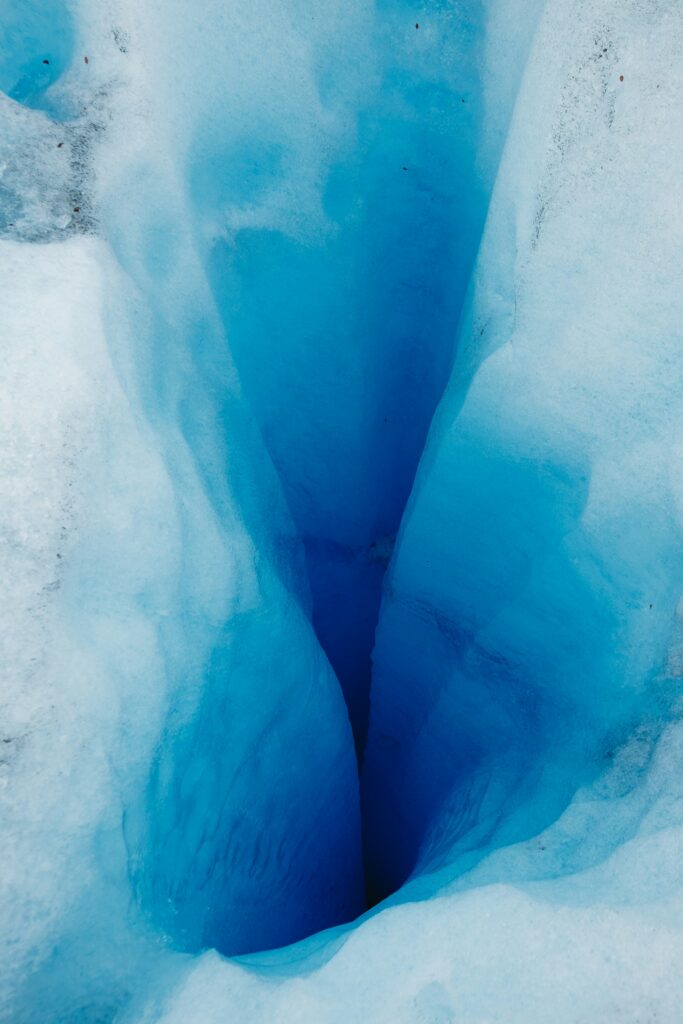
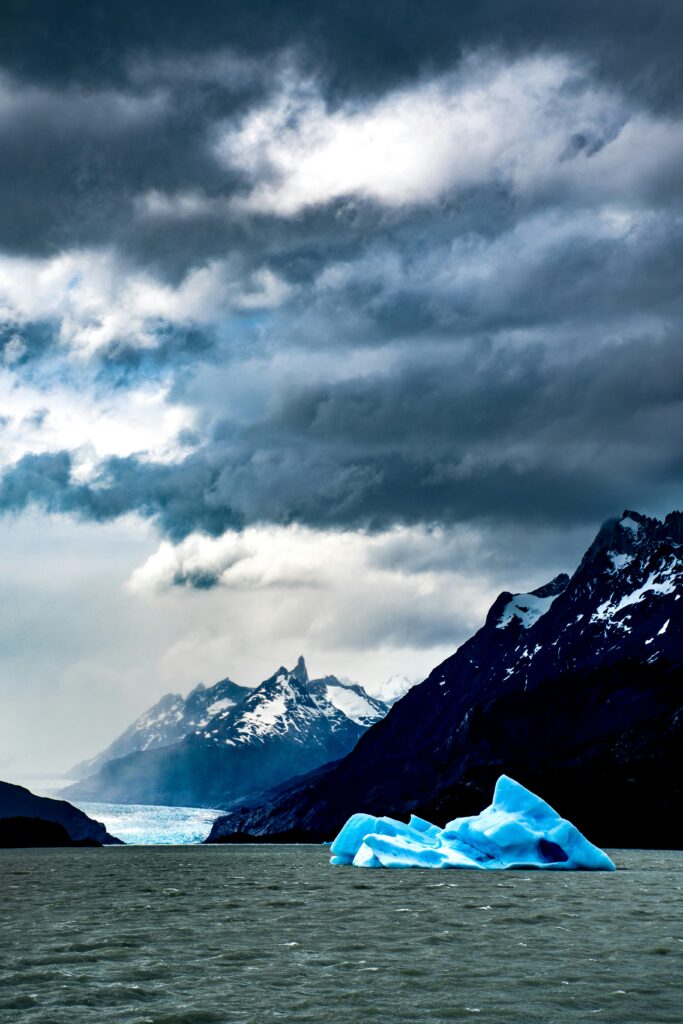
Winter Climate and Conditions
Winter temperatures in Patagonia can plummet well below freezing, and it’s usually around 30°F (-1°C) during the day. So, yeah, it’s cold! Expect lots of snow, especially in the higher elevations and southern regions. Be prepared for cold nights and colder temperatures. The days are short, so you won’t have as much daylight for activities as you would in the summer. Think cozy evenings by the fire after a day of exploring.
Winter Sports and Activities
- Skiing and Snowboarding: Several ski resorts in and around Patagonia, like the popular Cerro Catedral near Bariloche (though technically just outside of Patagonia proper, it’s often accessed from there), offer opportunities for skiing and snowboarding. Imagine carving through fresh powder with breathtaking views of the Andes.
- Winter Hiking: Some trails are still open for winter hiking, but this is only for experienced hikers who are well-equipped and knowledgeable about winter conditions. You’ll need proper gear, including snowshoes and crampons, and you should always check avalanche conditions before heading out. Hiking in the snow can be truly magical, though, offering a unique perspective on the Patagonian landscape.
Considerations for Winter Visits
- Limited Access: One of the most important things to consider about visiting Patagonia in winter is that some roads and areas, particularly in the southern regions, are closed due to heavy snowfall. This can limit your itinerary and make it more difficult to get around. Always check road conditions and park closures before you travel.
- Winter Gear: This is non-negotiable: you have to pack for cold weather and snow. Layers are absolutely essential. Think thermal underwear, fleece jackets, waterproof outer layers, warm hats, gloves, and sturdy boots. Don’t underestimate the importance of good quality winter gear. It can make or break your trip. If you plan on doing any winter hiking, you’ll also need specialized equipment like snowshoes or microspikes.
Month-by-Month Breakdown
Choosing the right time of the year to visit Patagonia can be tricky, so we’ve broken it down month by month to give you a clearer picture of what to expect. This will help you plan your Patagonia tours and make the most of your trip!
- September: Spring is starting to peek its head! Wildflowers are popping up everywhere, adding splashes of color to the landscape. It’s a great time for hiking and wildlife watching, as animals are becoming more active.
- October: Spring is gaining momentum! More flowers are blooming, and the weather is generally warmer, making it perfect for taking pictures of the stunning landscapes. Average temperature is on the rise.
- November: Spring is in full swing, and the weather is getting nicer and nicer. Whale watching season kicks off, especially around the Atlantic Patagonia coast. It’s an excellent time for wildlife lovers!
- December: Summer has officially arrived! Long days mean maximum daylight hours for exploring. It’s the ideal time for hiking, kayaking, and being on the water. Early summer offers a sweet spot before the biggest crowds arrive.
- January: Peak summer! Things are warm (but still windy!), and everything is open. It’s a great time for pretty much everything Patagonia has to offer, from trekking in El Chalten to exploring the main attractions in southern Patagonia.
- February: Still summer, but the crowds are starting to thin out a bit. This is a great month for hiking and exploring at a slightly slower pace. There’s often less wind than in January.
- March: Autumn is just around the corner, and the leaves are beginning to change color. The scenery is absolutely amazing for photos and hiking. Average temperature starts to dip.
- April: Autumn is in its full glory, with peak fall colors everywhere you look. The weather is cooler, making it perfect for trekking and seeing wildlife. This is late autumn and a great time for wildlife observation.
- May: Still autumn, but the crowds have dwindled significantly, making it a good time for budget travelers. It is getting colder, though, so pack accordingly.
- June: Winter is upon us! Snow is falling, and the skiing season is starting. It’s a completely different side of Patagonia.
- July: The middle of winter. It’s cold, and some places are closed due to snow. This is when you’ll find the plenty of snow mentioned earlier.
- August: Winter continues, but some areas may start to open up again. It’s still a good time for winter sports and enjoying the quiet beauty of a snowy landscape.
This month-by-month guide should give you a good idea of what to expect in Patagonia throughout the year. Remember that weather can be unpredictable, so it’s always best to be prepared for anything, no matter what time of year you visit! Whether you’re starting your trip from Buenos Aires, flying into Punta Arenas or Puerto Natales in Chilean Patagonia, or heading north from Puerto Montt, planning ahead is key. And don’t forget to research the best Patagonia tours for your chosen season and interests. If seeing marine mammals is high on your list, be sure to research the specific seasons for different species.
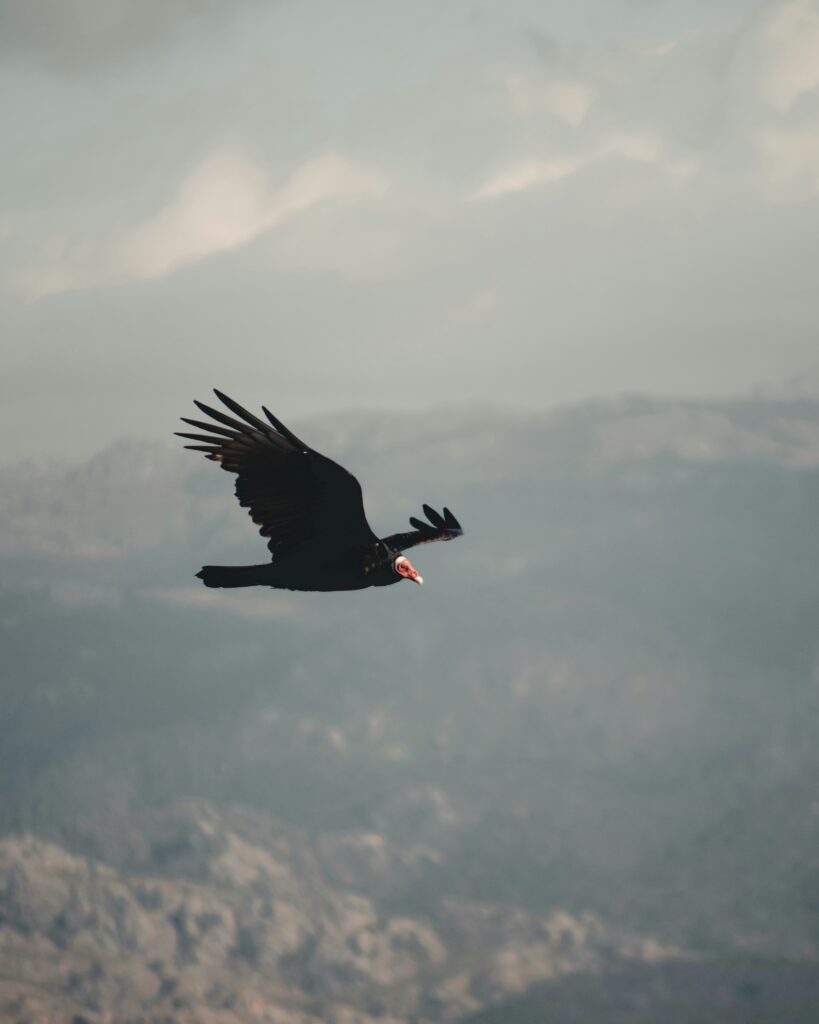
Special Events and Festivals in Patagonia
Patagonia isn’t just about jaw-dropping scenery and amazing wildlife; it’s got some cool cultural stuff going on too! Keep an eye out for local festivals and celebrations throughout the year. These events often showcase Patagonian traditions, music, food, and crafts. Think local bands, delicious food you’ve never tried before, and maybe even some traditional dancing. It’s a great way to get to know the local culture and have some fun! Just remember to check what’s happening closer to your trip, as these things can change.
Natural Phenomena to Plan Around
Patagonia’s natural wonders go way beyond the mountains and glaciers. There are some seriously awesome natural events that happen throughout the year, and planning your trip around these can make it extra special.
- Whale Watching Seasons: Seeing whales in Patagonia is a huge deal. These magnificent creatures migrate to the area to breed and feed, and it’s an incredible sight to behold. The whale watching season usually runs from spring through early winter (roughly September to May or June), especially around Peninsula Valdes. Different kinds of whales show up at different times, so do a little research to see which ones you might see when you’re there.
- Best Times for Viewing Penguins: Who doesn’t love penguins? These adorable birds are another highlight of a Patagonian adventure. The best time to see Magellanic penguins is during their breeding season, which is usually from spring through early summer (around September to February). Punta Arenas in Chile and the Valdes Peninsula in Argentina are prime penguin-spotting locations.
- Best time for Fishing in Patagonia: With a fishing season that stretches from early November to April, Patagonia offers a world-class experience for every trout angler—each season bringing its own unique rhythm to the waters. In November and December, the early season welcomes eager, unpressured fish, making it an excellent time for those seeking a more exclusive and rewarding experience. From January to mid-March, the warm summer months bring abundant hatches, creating prime conditions for dry fly fishing. As the season transitions into April, Patagonia’s autumn colors set the stage for the exciting fall streamer season, when larger, aggressive trout are on the move. Whether you’re drawn to the thrill of early-season solitude, the peak of summer’s lively action, or the challenge of autumn’s trophy catches, Patagonia delivers an unforgettable fly-fishing adventure in one of the world’s most spectacular landscapes.
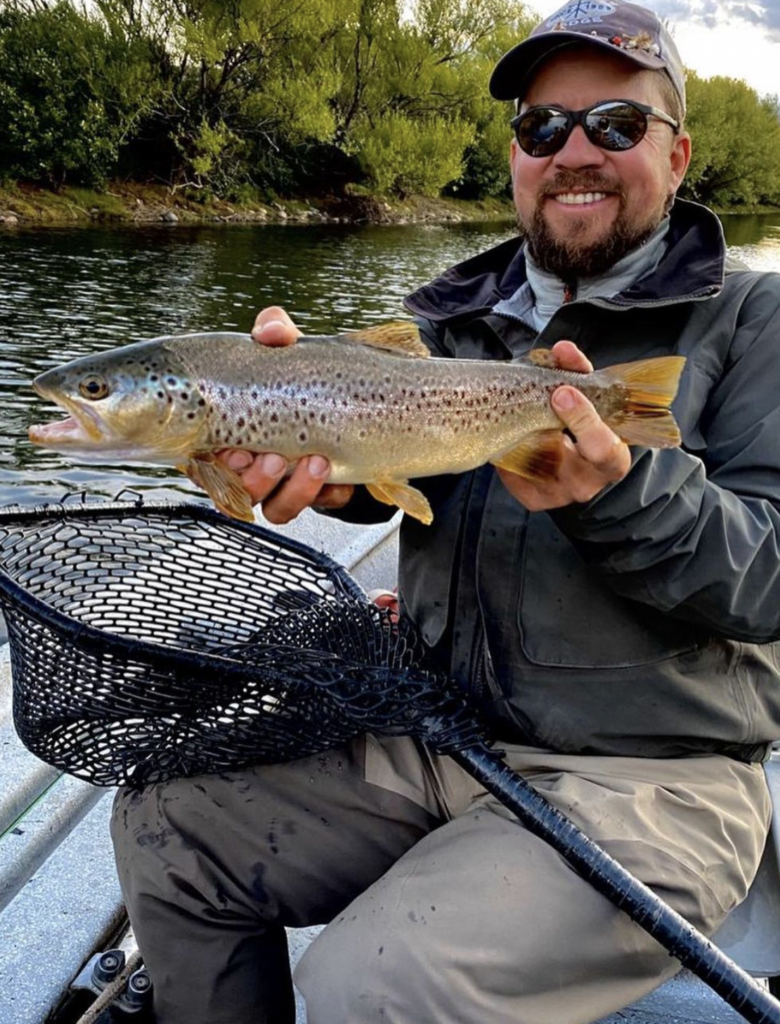
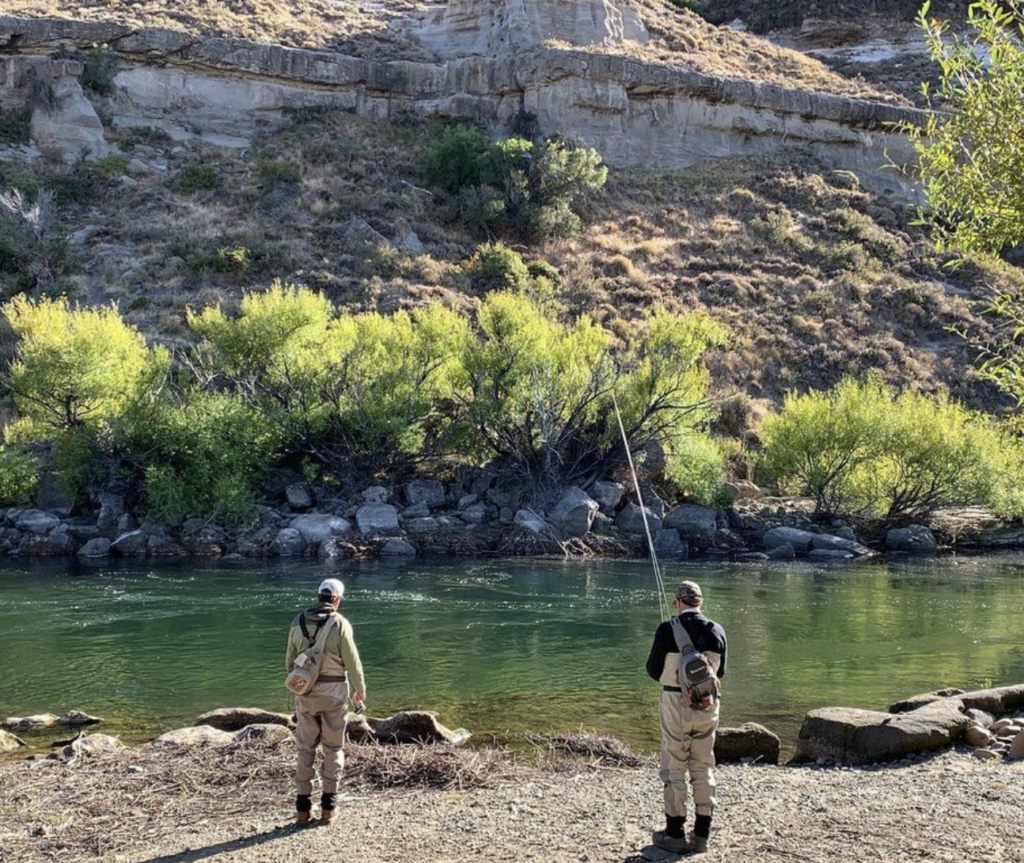
YOU MIGHT ALSO LIKE
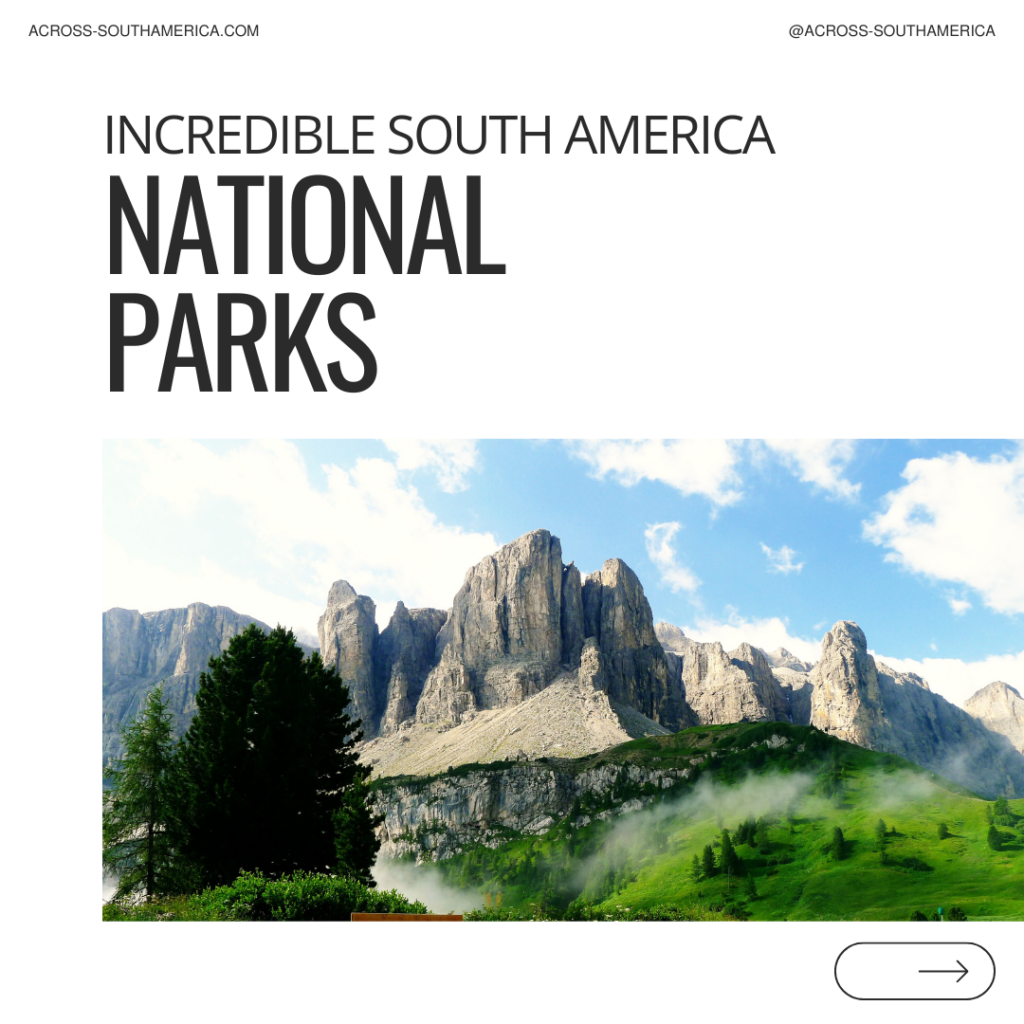
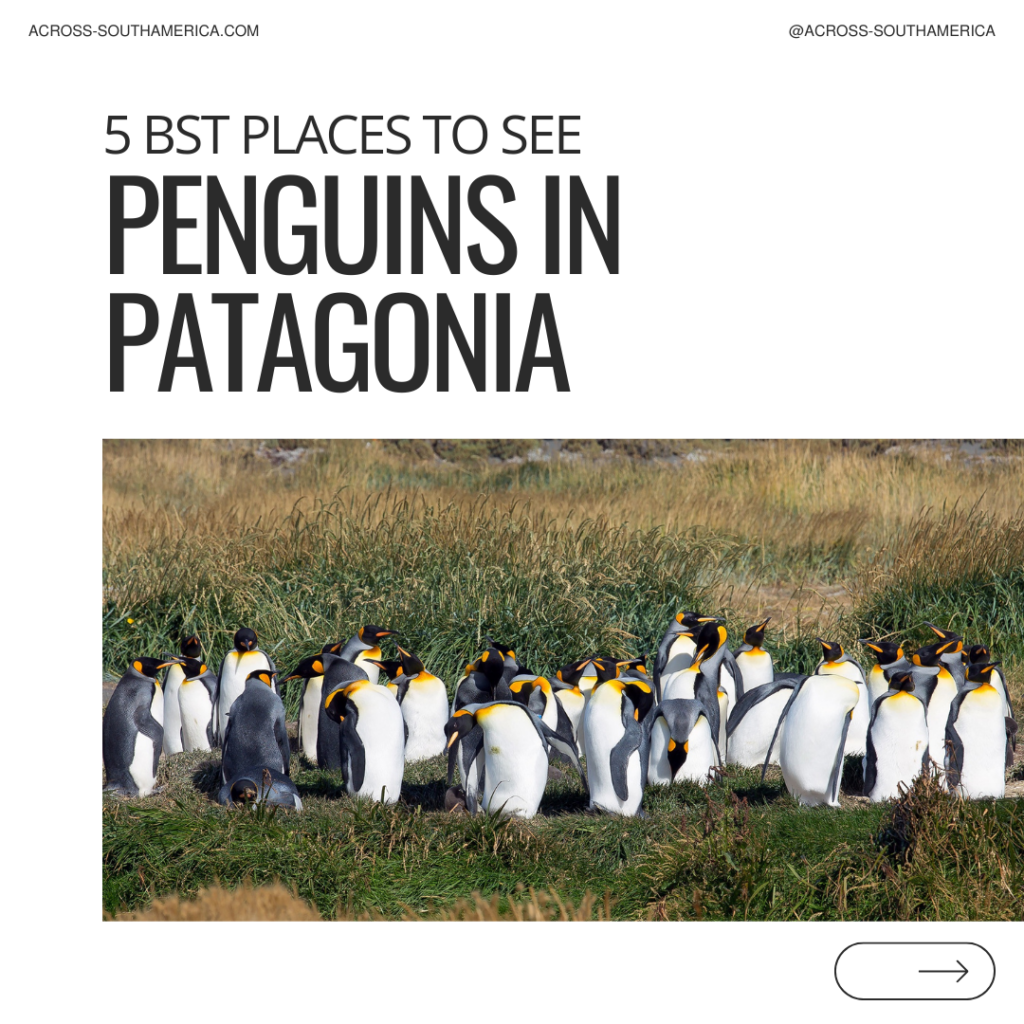
New Year’s Eve in Patagonia
Can you imagine ringing in the new year surrounded by the epic landscapes of Patagonia? It’s pretty magical! Lots of towns, like Puerto Natales and El Calafate, have New Year’s Eve celebrations with fireworks, music, and dancing. It’s a fun way to celebrate, but you’ll need to book your accommodation and any special dinners or events way in advance because it’s a popular time to travel. If you’re looking for something a bit more low-key, you could always find a quiet spot in nature and celebrate under the stars. Talk about a memorable New Year’s!
YOU MIGHT ALSO LIKE
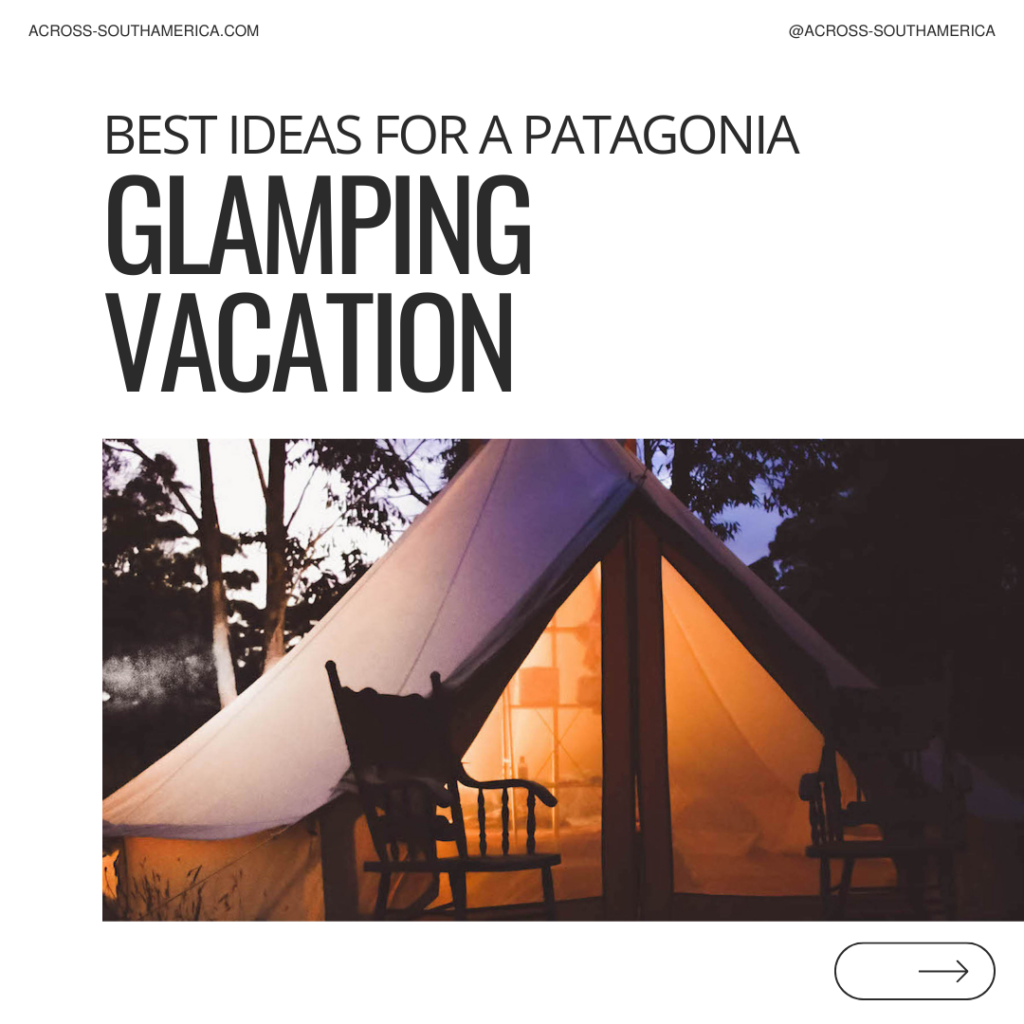
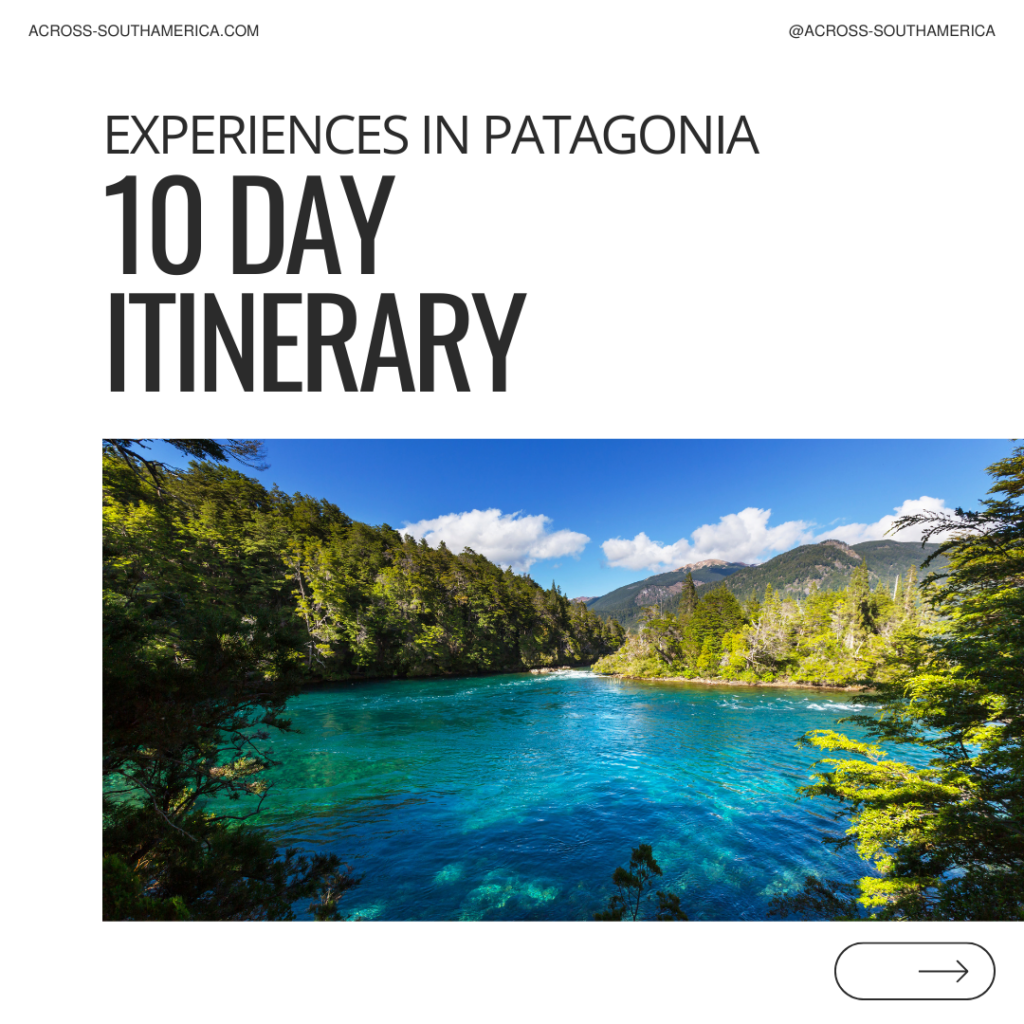
So, there you have it – a whirlwind tour of Patagonia’s seasons! Hopefully, this has given you a better idea of when to plan your trip. But let’s do a quick recap to make sure you’ve got all the key info.
Ask Across Team — Real Q&A from Women Who Get It! ✨
Planning your dream trip to South America? We get it — and that’s why we created Ask Across Team — Real Q&A from Women Who Get It: real answers from the women who know what makes a journey unforgettable.
Here’s a quick guide to some of the most common questions we get about visiting Patagonia — and a few insider tips to help you start planning with confidence.
What months are best to visit Patagonia?
The best months to visit Patagonia are from November to March, during the Southern Hemisphere’s summer. This period offers the warmest temperatures, longer daylight hours, and ideal conditions for outdoor adventures like hiking, glacier tours, and wildlife spotting
Which Patagonia is better, Chile or Argentina?
Both Chilean and Argentine Patagonia are breathtaking, but they offer different experiences. Chilean Patagonia is known for dramatic fjords, glaciers, and the iconic Torres del Paine National Park, while Argentine Patagonia offers vast steppes, stunning lakes, and the famous Perito Moreno Glacier. Ideally, visiting both sides gives you the most complete Patagonian adventure!
How many days do you need to visit Patagonia?
To truly experience Patagonia’s highlights, you should plan for at least 7 to 10 days. This allows enough time to explore major sites, enjoy scenic hikes, and experience the remote beauty of the region without feeling rushed. Longer stays (10–14 days) are ideal if you want to visit both Chilean and Argentine Patagonia.
What is high season in Patagonia?
The high season in Patagonia runs from December through February, coinciding with the Southern Hemisphere’s summer. During these months, you’ll find the best weather conditions, but it’s also the busiest time, so it’s essential to book your accommodations and tours well in advance
Summarizing the Best Times to Visit
- Spring (September-November): Warmer temperatures, wildflowers, wildlife awakening, fewer crowds, moderate weather (but be prepared for anything!), great for whale watching. Perfect for nature lovers and budget-minded travelers.
- Summer (December-February): Long days, warmest temperatures, everything is open, ideal for hiking and water activities. But it’s also the windiest, most crowded, and most expensive time to visit.
- Autumn (March-May): Stunning fall foliage, fewer crowds, comfortable hiking temperatures, great for photography and wildlife viewing. A fantastic time for a more peaceful experience.
- Winter (June-August): Snow-covered landscapes, fewer visitors, unique winter activities like skiing and snowboarding. Be prepared for cold temperatures, limited access in some areas, and shorter days.
Final Recommendations for Different Traveler Types:
- Thrill-seekers and hikers: Summer is your best bet for accessing all the trails and enjoying the widest range of activities.
- Wildlife enthusiasts: Spring and early summer offer excellent opportunities for whale watching and penguin viewing.
- Budget travelers: Spring and autumn are great shoulder seasons to visit, offering lower prices and fewer crowds.
- Photographers: Autumn is a dream come true with its vibrant fall colors.
- Winter sports enthusiasts: Obviously, winter is the time to hit the slopes!
- Those seeking peace and quiet: Autumn and winter offer a more tranquil experience with fewer crowds.

Ready to turn your Patagonian dreams into reality? We can help you plan a custom trip to South America tailored to your interests, budget, and travel style. Whether you want to trek through Torres del Paine, explore the glaciers of Los Glaciares, or embark on a wildlife observation adventure, we’ll take care of all the details. From booking flights and accommodations to arranging tours and activities, we’ll make sure your Patagonian adventure is everything you’ve ever imagined.
Contact us today to start planning your unforgettable journey to the end of the world!
